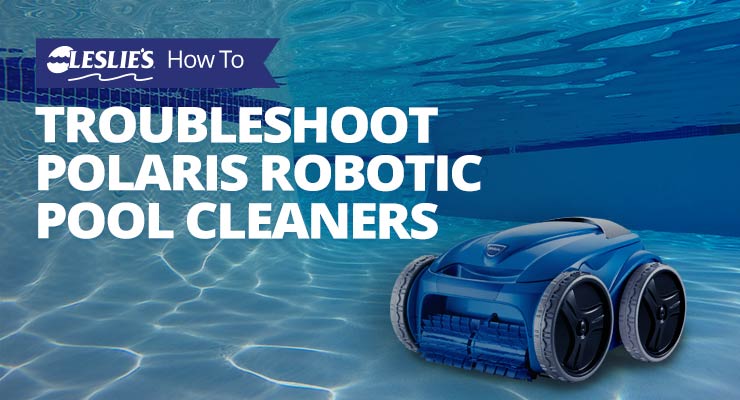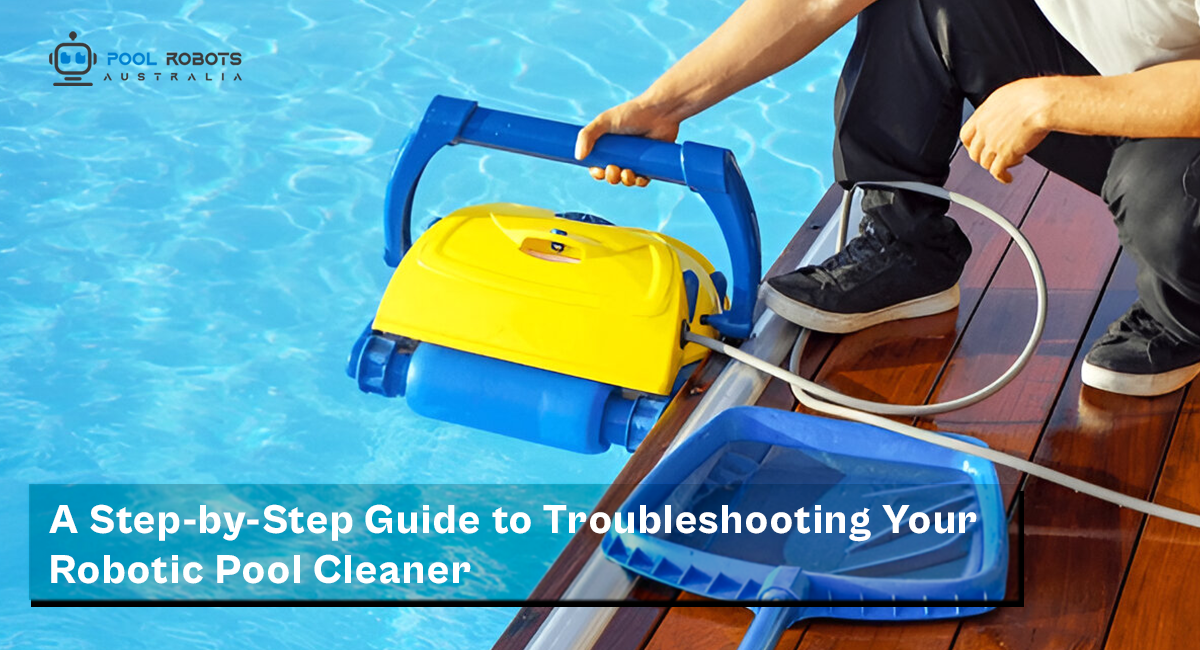Is your robotic pool vacuum not working the way it should? You rely on it to keep your pool clean without lifting a finger.
When it stops functioning properly, it can be frustrating and confusing. But don’t worry—fixing your robotic pool vacuum is easier than you think. In this guide, you’ll discover simple, step-by-step ways to troubleshoot common problems and get your pool vacuum back in action quickly.
Keep reading to save time, avoid costly repairs, and enjoy a sparkling clean pool again.
Common Issues
Robotic pool vacuums make pool cleaning easier. Still, they can face issues that stop them from working well. Knowing common problems helps fix them quickly. This saves time and keeps your pool clean and safe.
Vacuum Not Starting
Check if the vacuum is plugged in correctly. Sometimes the power supply is loose or unplugged. Make sure the timer or remote control is set properly. Look for a blown fuse or tripped circuit breaker. Dirt or debris in the filter can also stop it from starting.
Poor Cleaning Performance
Dirty filters reduce suction and cleaning power. Clean or replace the filter regularly. Check the brushes and wheels for wear or damage. Remove any tangled leaves or debris. Ensure the vacuum moves freely and covers the entire pool surface.
Stuck Or Jammed
The vacuum can get stuck on steps or corners. Check the wheels and tracks for blockages. Remove any large debris caught in the brushes or wheels. Make sure the pool surface is smooth and free of sharp objects. Adjust the vacuum’s path if it often gets stuck in one spot.
Unusual Noises
Grinding or rattling sounds may mean debris is inside the motor. Turn off the vacuum and clean the motor area. Loose parts can cause noise too. Tighten screws and check for broken components. Strange sounds might signal a worn-out motor or gear that needs repair.

Basic Checks
Basic checks help find simple problems fast. Before calling for help, try these steps. They save time and often fix the issue.
Power Supply And Cords
Make sure the vacuum is plugged in properly. Check the power cord for cuts or damage. A loose connection can stop the vacuum from working. Try another outlet to rule out power issues.
Filter And Debris Canister
Open the debris canister and empty it if full. Clean the filter to remove dirt and leaves. A clogged filter lowers suction and cleaning power. Rinse the filter under water and let it dry.
Brushes And Wheels
Look at the brushes and wheels for blockages. Remove hair, string, or leaves wrapped around them. Check if the wheels turn freely. Stuck brushes or wheels stop the vacuum from moving.
Remote Control And Settings
Check the remote control batteries. Replace weak or dead batteries. Confirm the vacuum is set to the right cleaning mode. Reset the settings to default if needed.
Quick Fixes
Quick fixes can save time and get your robotic pool vacuum working again fast. Many common issues have simple solutions. These fixes often require no special tools or skills. Follow these steps carefully to keep your pool clean and your vacuum running smoothly.
Resetting The Vacuum
Start by turning off the vacuum and unplugging it. Wait for about one minute. Plug the vacuum back in and turn it on. This process clears minor errors and resets the system. A reset often restores normal function quickly.
Clearing Blockages
Check the vacuum’s brushes, wheels, and intake for debris. Remove leaves, hair, and dirt that may be stuck. Use a soft brush or cloth to clear tight spaces. Blockages reduce cleaning power and slow the vacuum down. Removing debris helps restore its speed and suction.
Cleaning Filters And Brushes
Remove the filters and rinse them under running water. Avoid using harsh chemicals that can damage the filter. Clean the brushes carefully to remove algae and dirt. Dirty filters and brushes lower suction and cleaning efficiency. Regular cleaning keeps the vacuum working at its best.
Replacing Worn Parts
Inspect brushes, wheels, and filters for signs of wear. Cracked or broken parts affect cleaning quality. Replace worn parts using manufacturer-approved replacements. Keeping parts in good condition extends the vacuum’s life. Regular checks prevent small problems from becoming big ones.

Maintenance Tips
Maintaining your robotic pool vacuum keeps it working well for a long time. Small steps can stop big problems. Regular care helps the vacuum clean better and last longer.
Regular Cleaning Schedule
Clean the vacuum after every use. Remove leaves, dirt, and debris from brushes and filters. Rinse parts with fresh water to avoid buildup. A clean vacuum moves smoothly and cleans better.
Storage Best Practices
Store the vacuum in a cool, dry place. Avoid direct sunlight to protect its parts. Keep it off the ground to prevent damage. Proper storage stops wear and keeps the vacuum ready to use.
Software Updates
Check for software updates often. Updated software improves cleaning patterns and fixes bugs. Connect the vacuum to your home Wi-Fi or use a USB. Keeping software current helps the vacuum work smarter.
Inspecting For Wear And Tear
Look over the vacuum regularly for broken parts. Check brushes, wheels, and cables for damage. Replace worn parts to avoid bigger issues. Early fixes save time and money later.
When To Seek Professional Help
Knowing when to call a professional can save time and avoid damage. Some problems with robotic pool vacuums need expert skills. Simple fixes help, but some issues require a trained technician. This guide shows signs that mean it is time to seek help.
Persistent Electrical Issues
Electrical problems that repeat or get worse need expert care. Faulty wiring or damaged circuits can be dangerous. A professional can safely test and fix electrical parts. Avoid trying to repair complex electrical faults yourself.
Motor Problems
The motor powers the vacuum’s movement and suction. Strange noises, overheating, or no response signal motor trouble. Motor repairs often need special tools and knowledge. Professionals can diagnose and replace motor parts properly.
Complex Mechanical Failures
Broken gears, belts, or wheels affect cleaning performance. These parts are often small and hard to fix. Mechanical failures that block movement should be handled by experts. They have the right tools to fix or replace parts correctly.
Warranty And Service Options
Check your vacuum’s warranty before attempting repairs. Many brands offer free or low-cost repairs under warranty. Using authorized service centers keeps your warranty valid. Professionals know how to handle repairs without voiding coverage.

Frequently Asked Questions
How Do I Reset My Robotic Pool Vacuum?
To reset your robotic pool vacuum, turn it off and unplug it for a few minutes. Then, plug it back in and turn it on. This often clears minor errors and restores normal operation.
Why Is My Robotic Pool Vacuum Not Moving?
Check for tangled debris or blockages in the brushes and wheels. Also, ensure the battery is charged and the filter is clean. These issues commonly cause movement problems.
How Can I Improve Suction On My Pool Vacuum?
Clean or replace the filter regularly. Remove debris from the intake and ensure the vacuum’s seals are tight. Proper maintenance boosts suction efficiency.
What Causes My Robotic Pool Vacuum To Stop Mid-cycle?
A full filter, low battery, or motor overheating can cause stoppages. Inspect and address these issues to keep your vacuum running smoothly.
Conclusion
Troubleshooting a robotic pool vacuum becomes easier with basic steps. Check the power supply and clean the filter regularly. Inspect the brushes and wheels for any blockages. Reset the vacuum if it stops working properly. Small fixes often solve common problems quickly.
Keep your pool vacuum maintained for better performance. Regular care helps avoid bigger issues later. Enjoy a cleaner pool with less effort. Simple actions save time and money. Stay patient and follow these tips for smooth operation.



